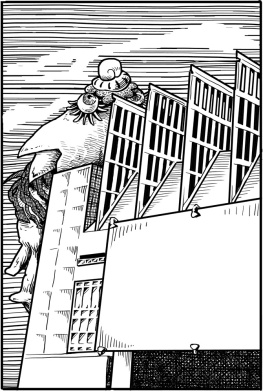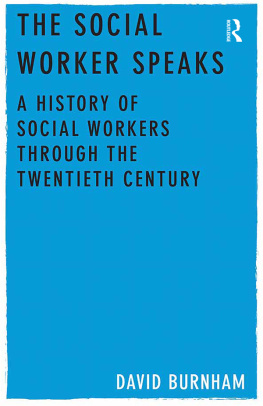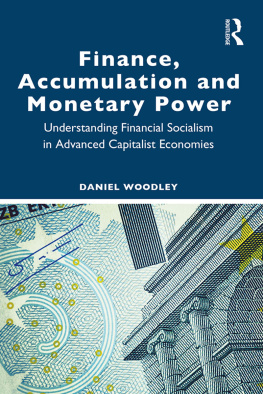Unity in Separation
Endnotes Issue #4
Editorial
Since the last edition of Endnotes in 2013, the global economic train-wreck has juddered forward. No real recovery has taken place, but neither has there been a return to depression-like conditions. It is unclear how much longer this interim period will last. The wrapping-up of extraordinary measures has been declared many times, most recently in September 2015, when the US Federal Reserve was expected to raise its prime rate (this move would have ended a six-year stretch in which the fed funds rate was at zero). But this, too, was cancelled at the last minute. In a by-now familiar scene, technocrats shuffled onto the stage, shuffled some papers, and then shuffled off again. Another round of quantitative easing is anticipated. With little changing, the high-income countries economies continue to tick over.
Meanwhile, uncertainty and economic turbulence are extending themselves from the high-income countries to the low-income ones, which not so long ago were thought to be the scene of a possible economic delinking. Today, the news from Brazil looks grim, and the news from China is getting grimmer by the month. This is already impacting economies across the low-income world, so much of which depends on Chinas demand for commodities. Are we about to see another Third World Debt Crisis unfold, as we did in 1982?
Even more so than when we published Endnotes 3 , it is hard to say what is likely to happen next. Complex developments are taking place, which look quite different when viewed from Ferguson, Missouri, or Athens, Greeceor along the route of refugees fleeing Syria on their way to Germany. In some places, new social struggles are taking place; in others, there has been a return to calm; in still others, there is unending civil war. Some countries have seen the resurgence of a milquetoast parliamentary left, yet the prevailing order remains decidedly unshaken.
THE IN-FLIGHT TEAM WILL BE COMING AROUND IN A MOMENT WITH ANOTHER ROUND OF DRINKS
The world is apparently still trapped within the terms of the holding pattern that we described in Endnotes 3 .1 This pattern is defined by a partial petrification of class struggle, attendant on a similar petrification of the economic crisis. This social stasis has been maintained only by means of massive ongoing state interventions, which have ensured that the crisis remains that of some people, in some countries, instead of becoming generalised across the world. How long can this holding pattern be maintained?
As they did in the earlier years of the decade, states continue to spend vast quantities of money in order to stave off catastrophe. At the end of 2014, debt levels as a percentage of GDP were still rising across the high-income countries, reaching 90 percent in the UK, 95 percent in France, 105 percent in the US, and 132 percent in Italy (the exception was Germany, where debt levels fell from 80 percent in 2010 to a still-high 73 percent in 2014). Yet all this state spending has not led to economic recovery. Following an initial period of growth in 201011, high-income countries economies have once again returned to a state of relative stagnation. The main exceptions are the US and UK, where a small measure of recovery has taken place. By contrast, across continental Europe and in JapanECB manoeuvres and Abeconomics notwithstandinggrowth rates have remained low or negative. Greeces GDP has, of course, shrunk significantly.
Such lackluster developments continue a trend that has been in place for decades: in the high-income countries GDP-per-capita growth rates have been ever slower on a decade by decade basis, falling from 4.3 percent in the 1960s, to 2.9 percent in the 1970s, to 2.2 percent in the 1980s, to 1.8 percent in the 1990s, to 1.1 percent in the 2000s. The 2010s seem set to continue this quantitative trend, with a growth rate of around 1.0 percent between 2011 and 2014. However, there are signs at present that we are at a qualitative turning point; the world economy is threatening to go down, in a Titanic fashion. Politicians can be seen, everywhere, trying to bail the inflowing water out of the sinking ship. But they are doing so with a set of hand pails which are themselves leaking. As we argued in 2013, these politicians are locked into a dance of the dead, for the following reasons.
States are taking out debt to prevent the onset of a debt-deflation spiral; however, their capacity to take out this debt is based on the promise of future economic growth. A combination of slow growth and already high debt levels has meant that government officials have found themselves trapped between two opposed pressures. On the one hand, they have needed to spend huge quantities of money to prevent recession from becoming depression. On the other, they have already spent so much over the past few decades that they have little left to give.
Thus, instead of spending even more, governments in the richer countries engaged in campaigns of austerity: to show their creditors that they remained in control of their finances, they cut social services at the same time as they handed out money to bankers. Austerity has had devastating consequences for workers. Public employees found themselves without jobs. The costs of education and healthcare rose just as households incomes were pinched. Meanwhile, without a boost to demand for goods and services, private economies stagnated. Creditor nations have been remarkably successful in preventing any departure from this line among debtors.
A PROBLEM OF COMPOSITION
This contradictory logic, we argued, shaped the unfolding crisis and so also the struggles that erupted in response to it. Many people claimed that government officials were acting stupidly or even crazily: shouldnt they have been making the banks pay in order to bail out the people, rather than the other way around? The main explanation offered for this irrationality was that governments had been captured by moneyed interests; democracy had given way to oligarchy. It was in this way that the form of the crisis determined the form of class struggle in this period: it became a contest of real democracy against austerity. Real democracy could, according to the logic of the protests, force the state to intervene in the interest of the nation, rather than that of crony capitalists.
In reality, governments have few options available to them, regardless of who is at the helm, for this crisis is one not of crony or neoliberal capitalism but rather of capitalism itself. The latter is beset by ever slower rates of economic growth. As productivity levels continue to rise in this context, the result has been an ongoing production of surplus populations alongside surplus capital, excesses which the economy has trouble absorbing. The social order persists, but it is slowly unraveling. The categories of our world are increasingly indistinct. When protesters have come together in this context, they have typically found it difficult to locate a common ground on which to build their struggle, since they experience the crisis in such diverse wayssome worse than others. The perspectives of the old workers movement are dead and gone, and thus unavailable as a substantial basis for common action. How are we to account for the failure of that movement to revive itself when workers everywhere are getting screwed?
In this edition, we reconsider in depth the long emergence and dissolution of an affirmable workers identity (and, with it, the crisis of the Left) in A History of Separation. European socialists and communists had expected the accumulation of capital both to expand the size of the industrial workforce and, at the same time, to unify the workers as a social subject: the collective worker, the class in-and-for itself. However, instead of incubating the collective worker, capitalist accumulation gave birth to the separated society. The forces of atomisation overpowered those of collectivisation. Late capitalist civilisation is now destabilising, but without, as yet, calling forth the new social forces that might be able, finally, to dissolve it.
Next page









